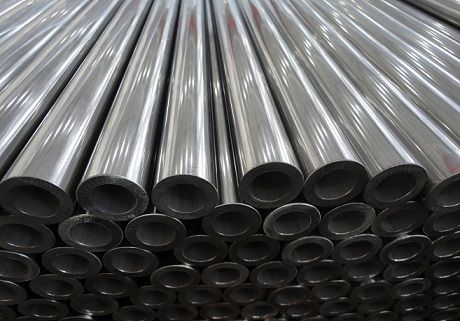Nickel has been used in alloys that date back to the dawn of civilization. Chemical analysis of artifacts has shown that weapons, tools, and coins contain nickel in varying amounts.
Nickel in elemental form or alloyed with other metals and materials has made significant contributions to our present-day society and promises to continue to supply materials for an even more demanding future.
Nickel is a versatile element and will alloy with most metals. Complete solid solubility exists between nickel and copper. Wide solubility ranges between iron, chromium, and nickel make possible many alloy combinations.
Applications and Characteristics of Nickel Alloys
Nickel and nickel alloys are used for a wide variety of applications, the majority of which involve corrosion resistance and/or heat resistance. Some of these include:
- Aircraft gas turbines
- Steam turbine power plants
- Medical applications
- Nuclear power systems
- Chemical and petrochemical industries
A number of other applications for nickel alloys involve the unique physical properties of special-purpose nickel-base or high-nickel alloys. These include:
- Low-expansion alloys
- Electrical resistance alloys
- Soft magnetic alloys
- Shape memory alloys
Heat-Resistant Applications. Nickel-base alloys are used in many applications where they are subjected to harsh environments at high temperatures. Nickel-chromium alloys or alloys that contain more than about 15% Cr are used to provide both oxidation and carburization resistance at temperatures exceeding 760°C.
Corrosion Resistance. Nickel-base alloys offer excellent corrosion resistance to a wide range of corrosive media. However, as with all types of corrosion, many factors influence the rate of attack. The corrosive media itself is the most important factor governing corrosion of a particular metal.
Low-Expansion Alloys Nickel was found to have a profound effect on the thermal expansion of iron. Alloys can be designed to have a very low thermal expansion or display uniform and predictable expansion over certain temperature ranges.
Iron-36% Ni alloy (Invar) has the lowest expansion of the Fe-Ni alloys and maintains nearly constant dimensions during normal variations in atmospheric temperature.
The addition of cobalt to the nickel-iron matrix produces alloys with a low coefficient of expansion, a constant modulus of elasticity, and high strength.
Electrical Resistance Alloys. Several alloy systems based on nickel or containing high nickel contents are used in instruments and control equipment to measure and regulate electrical characteristics (resistance alloys) or are used in furnaces and appliances to generate heat (heating alloys).
Types of resistance alloys containing nickel include:
- Cu-Ni alloys containing 2 to 45% Ni
- Ni-Cr-Al alloys containing 35 to 95% Ni
- Ni-Cr-Fe alloys containing 35 to 60% Ni
- Ni-Cr-Si alloys containing 70 to 80% Ni
Types of resistance heating alloys con-taining nickel include:
- Ni-Cr alloys containing 65 to 80% Ni with 1.5% Si
- Ni-Cr-Fe alloys containing 35 to 70% Ni with 1.5% Si + l% Nb
Soft Magnetic Alloys. Two broad classes of magnetically soft materials have been developed in the Fe-Ni system. The high-nickel alloys (about 79% Ni with 4 to 5% Mo; bal Fe) have high initial permeability and low saturation induction.
Shape Memory Alloys.Metallic materials that demonstrate the ability to return to their previously defined shape when subjected to the appropriate heating schedule are referred to as shape memory alloys. Nickel-titanium alloys (50Ni-50Ti) are one of the few commercially important shape memory alloys.


Reviews
There are no reviews yet.